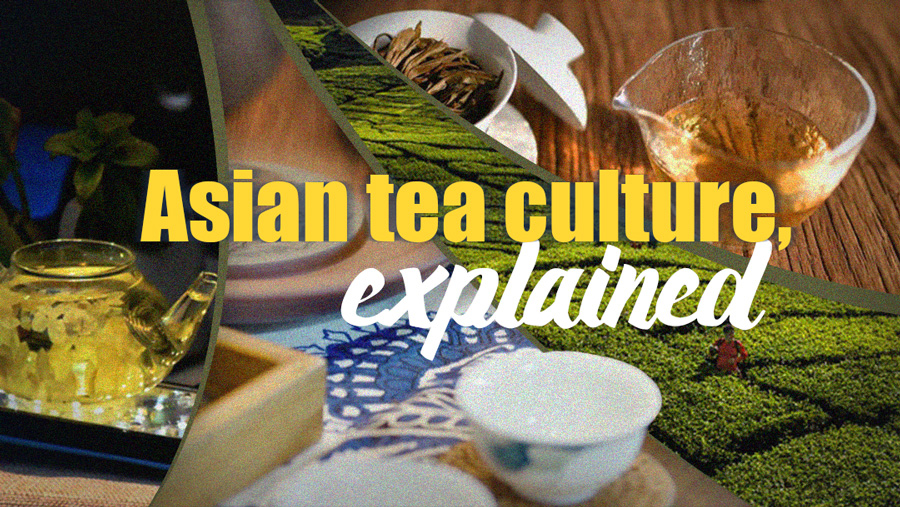
Asia Pacific
12:46, 17-May-2019
Asian tea culture, explained
CGTN
05:12

Apart from coffee and cocoa, tea is one of the most widely consumed hot beverages in the world.
According to the International Tea Committee, tea production stood at 5.86 million tons in 2018, up three percent year-on-year. This global output can ensure 780 grams of tea provided for each person around the world.
But do you know where this popular drink originated from and how it spread across Asia and beyond?
Join us to find out more about the diverse tea culture in different Asian countries.
China: The homeland of tea
China is the earliest country in the world to have planted tea and the original homeland of tea culture. Thanks to different geographic climates, Chinese people have developed different varieties of tea with unique flavors.
How do Chinese people prepare and serve tea?
Gongfu Cha (or Gongfu tea ceremony), means "making tea with skill." It is a popular method of preparing and presenting tea in China. It makes use of pretty Yixing tea set to prepare and serve the beverage. Essentially, water quality and temperature are the two most important aspects that have to be considered while brewing tea. The procedure is mostly applicable to Oolong teas.
The custom of tea-drinking spread from China to other countries through cultural exchanges via the ancient "Tea Horse Road" (Southern Silk Road) and other trade channels.
The matcha ceremony in Japan
Tea was brought to Japan from China during the ninth century by a traveling Buddhist monk and was later firmly integrated into the Japanese culture.
But what's a Japanese tea ceremony like?
The Japanese tea ceremony is often known as matcha. In Japan, serving tea is not only an art but also a spiritual discipline. As an art, the tea ceremony is an occasion to appreciate the simplicity of the tea room's design, the feel of the tea bowl in the hand, and the company of friends. As a discipline, aesthetic contemplation of floral arrangement, ceramics and calligraphy are essential.
Chai: The way Indians drink tea
India is one of the largest tea producers in the world. It learned the art of tea-drinking from Tibet centuries ago. Tea is so popular in India that 70 percent of the tea it produces is consumed by its own people.
What are the features of Indian chai?
The name "chai" is the Hindi word for tea; it means a mix of spices blended into a tea-like beverage. The traditional ingredients of a spiced tea usually include black tea mixed with strong spices like cinnamon, cloves, and ginger. As tea is India's most popular drink, you may find lots of roadside chai stalls serving hot chai with spices, sugar and milk.
The Turkish tea culture
Tea was brought to Turkey from China as early as the 19th century. It is now the most commonly consumed hot drink, despite the country's long history of drinking coffee.
How is Turkish tea served?
Turkish tea is traditionally offered in small tulip-shaped glasses which are usually held by the rim, in order to save the fingertips from being burned, since it is served boiling hot. Most often, salty or sweet biscuits called kurabiye are served with tea.
Originating from China, tea has spread beyond Asian countries to the rest of the world. The classic afternoon tea in Britain, mint tea in Morocco, Zavarka in Russia, or Yerba mate in South America, all offer a special experience.
Video editor: Chen Shuxun
Scriptwriter: Zhong Jianli
Animation: Pan Yufei
Editor and voice-over: Nadim Diab
Cover image designer: Fan Chenxiao
Producer: Wen Yaru
Chief editor: Lin Dongwei
Supervisor: Pang Xinhua

SITEMAP
Copyright © 2018 CGTN. Beijing ICP prepared NO.16065310-3
Copyright © 2018 CGTN. Beijing ICP prepared NO.16065310-3